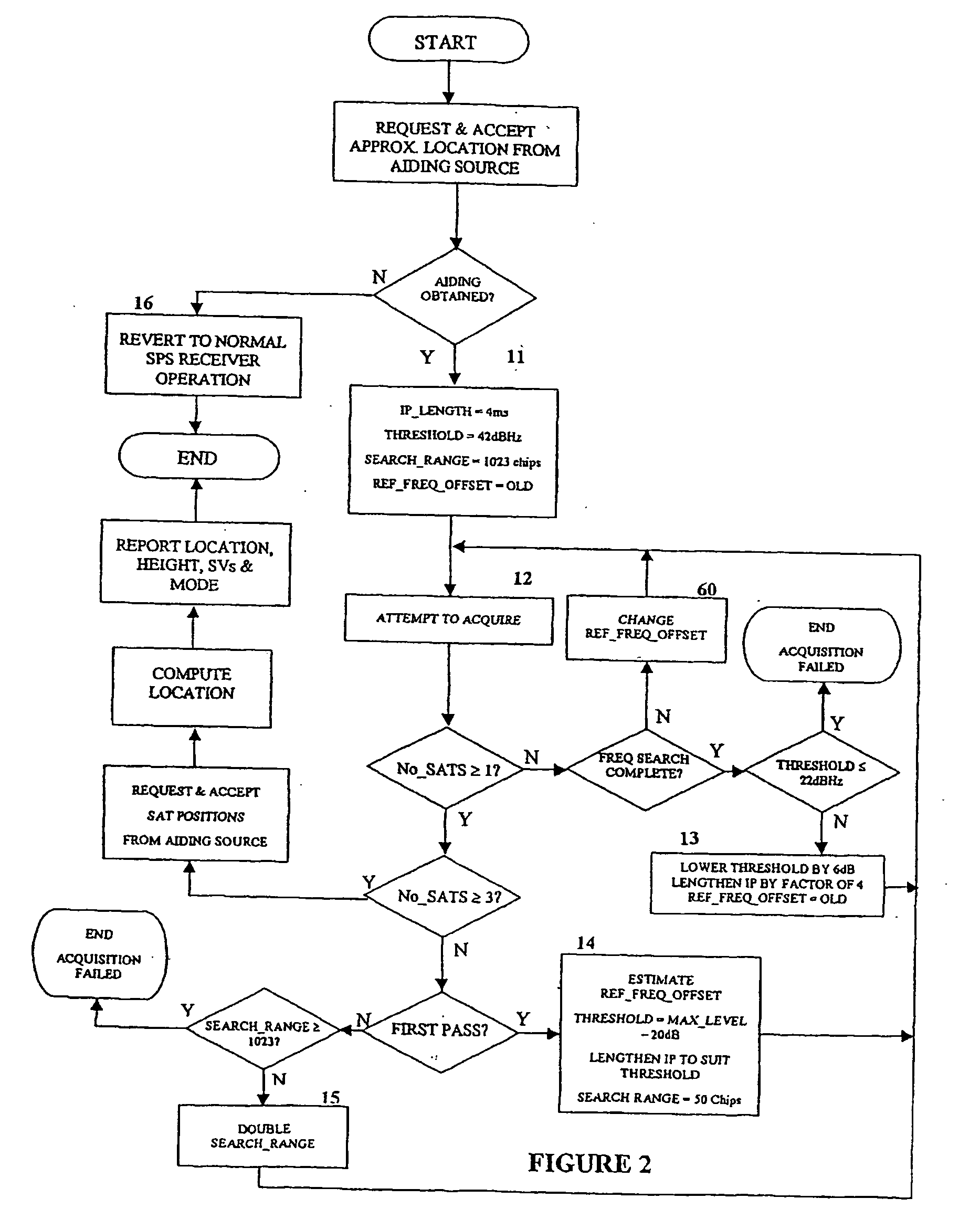Satellite-based positioning system improvement
- Summary
- Abstract
- Description
- Claims
- Application Information
AI Technical Summary
Benefits of technology
Problems solved by technology
Method used
Image
Examples
Embodiment Construction
[0032] This invention relates to refinements and extensions to a commonly owned invention disclosed in U.S. Pat. No. 5,459,473. Accordingly, the foregoing U.S. patent is hereby incorporated by reference.
Aiding Source / Receiver Interaction
[0033] As previously described, the aiding data used in accordance with the present invention may be limited to information that includes an approximate location for an SPS receiver and the positions and velocities of a specific set of satellites. This information is determined and provided through a request / response sequence. A model of one embodiment of such an exchange in accordance with the present invention is depicted in FIG. 1.
[0034] A typical exchange might involve an SPS Receiver 1, an Aiding Source 2 and a Call Taker 3. For instance, the SPS Receiver 1 might be a GPS receiver embedded in or co-located with a wireless telephone or other handset. The Aiding Source 2 may be located at a call center or cell site or elsewhere in the wireless...
PUM
 Login to View More
Login to View More Abstract
Description
Claims
Application Information
 Login to View More
Login to View More - R&D
- Intellectual Property
- Life Sciences
- Materials
- Tech Scout
- Unparalleled Data Quality
- Higher Quality Content
- 60% Fewer Hallucinations
Browse by: Latest US Patents, China's latest patents, Technical Efficacy Thesaurus, Application Domain, Technology Topic, Popular Technical Reports.
© 2025 PatSnap. All rights reserved.Legal|Privacy policy|Modern Slavery Act Transparency Statement|Sitemap|About US| Contact US: help@patsnap.com



